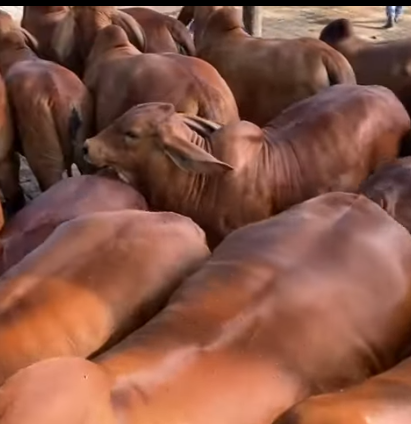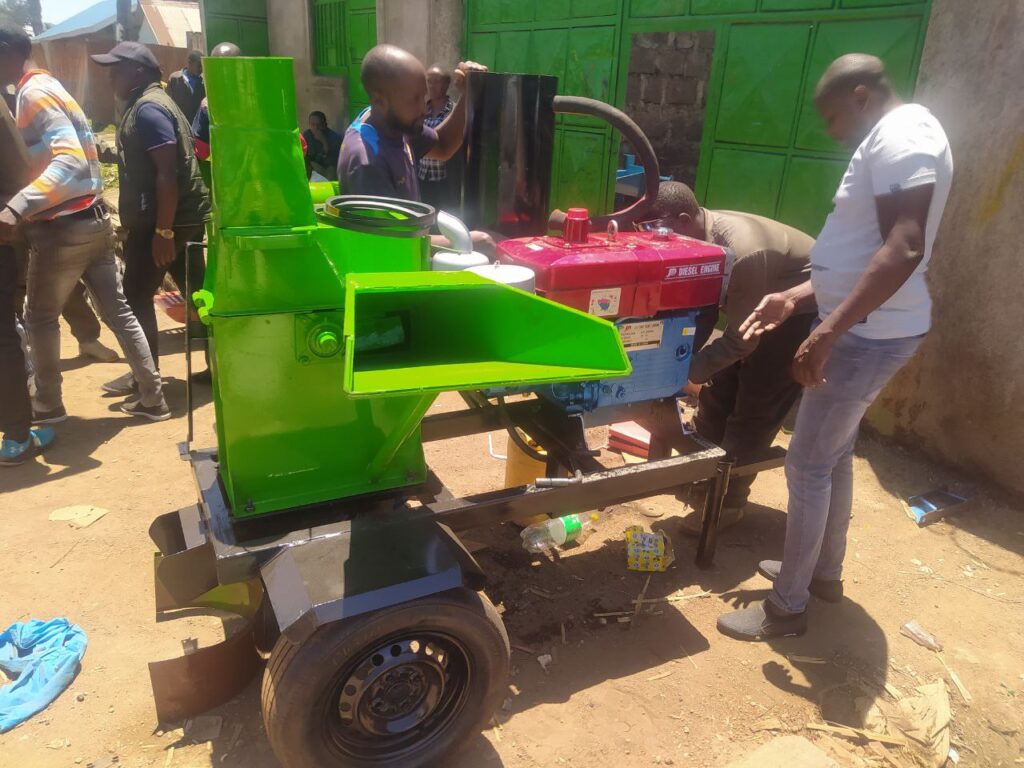Don't miss our holiday offer - up to 50% OFF!
Simple Tricks to Make Beef Farming Profitable in East Africa
So, why should you care about beef farming in Kenya or East Africa? Well, if you are an urban dweller, you are probably already feeling the economic pinch that has become all too familiar to many people in East Africa. Most people are stuck in a daily grind that leaves them longing for more financial freedom. You’re not alone. With the rising cost of living, many working professionals are exploring alternative income sources to secure a better future. One promising side hustle that’s gaining traction is beef farming, especially for those with access to upcountry farms. With the right approach and tools, beef farming can be a profitable and manageable investment. Here’s how to make it work for you.
Table of Contents
Why Beef Farming is the Perfect Side Hustle Right Now
Beef farming offers a unique opportunity to diversify your income, especially if you’re tired of depending solely on a salary. For many urbanites, the upcountry farm—often inherited or available through family—represents a dormant asset that could generate steady income. With strategic planning and a few smart investments, you can transform that potential into a profitable venture without leaving your day job.
The beauty of beef farming lies in its flexibility. It allows you to start small, scale at your own pace, and integrate technology to reduce manual labor. With the current economic challenges, there’s no better time to maximize your resources and venture into agriculture. And if you’re thinking of getting started, having the right tools can make all the difference.

The Tools That Make Beef Farming Easier and More Profitable
Beef farming doesn’t have to be a labor-intensive ordeal. By investing in the right equipment, you can significantly cut down on time and effort while maximizing your farm’s productivity. Here are some essential tools that will set you on the path to profitability:
- Electric Feed Choppers: Ideal for chopping a variety of feed materials quickly, electric choppers are energy-efficient and perfect for small to medium-sized operations.
- Diesel Feed Choppers: These are suitable for larger-scale farming where electricity may be unreliable. They offer power and durability, making them ideal for handling large volumes of feed.
- Petrol Feed Choppers: Great for farms located off the grid, petrol choppers provide flexibility and mobility.
- Chaff Cutters: These tools are essential for preparing silage, a cost-effective feed alternative that’s crucial during the dry season.
- Feed Mixers: Perfect for creating balanced rations by mixing different feed components. Proper feed mixing ensures your cattle receive all the necessary nutrients for optimal growth.
Investing in these tools might seem daunting at first, but think of them as a gateway to greater efficiency and profitability. Plus, to ease the acquisition process, our equipment can be acquired through asset financing. This allows you to spread the cost over time, reducing the financial burden and making it easier to get started.
Smart Feeding Strategies for Higher Yields and Lower Costs
Feeding accounts for a significant portion of beef farming costs. With smart strategies and the right tools, you can reduce expenses without compromising quality. Here’s how:
- Embrace Silage Preparation: Silage is an affordable and nutrient-rich feed option that’s especially valuable during dry spells. Chaff cutters make it easy to prepare silage by cutting up roughage like maize stalks and napier grass, which can then be fermented for long-term storage.
- Mix Your Own Feeds: Store-bought feeds can be expensive, but with a feed mixer, you can create your own balanced rations. This allows you to control the quality of the feed while saving money.
- Practice Rotational Grazing: By moving cattle between different grazing areas, you allow pastures to regenerate, ensuring a steady supply of fresh grass. This method reduces the need for supplementary feeds, further cutting costs.
Alternative Beef Farming Methods for Small Acreage or Limited Land
For many aspiring beef farmers, access to large tracts of land is a challenge. Fortunately, there are alternative methods to maximize productivity even on small acreage:
- Leasing Land: If your current land is limited, consider leasing additional land in nearby areas. This approach can provide extra grazing space during peak seasons, allowing you to fatten your cattle before selling them for a higher profit.
- Buying Unharvested Silage During the Rainy Season: During the rainy season, crops like maize and napier grass are in abundance. Purchasing unharvested silage from nearby farmers allows you to stockpile feed when it’s most affordable. Use chaff cutters to prepare the silage for storage, ensuring you have a buffer during the dry season.
- Harvesting and Processing Silage for Long-Term Storage: With a well-planned feeding strategy, you can prepare enough silage to last through the dry months. Use chaff cutters to chop the roughage, and then store the processed silage in airtight conditions (e.g., silage bags or trenches) to preserve its quality.
Tips to Survive the Dry Season
The dry season is a challenging time for beef farmers, but with proper planning, you can ensure your herd remains healthy and profitable. Here’s how to manage:
- Monitor Feed Quantities Closely: During the dry season, it’s important to ration your feed carefully. Avoid overfeeding and monitor the condition of your animals to ensure they’re receiving just enough to maintain health without depleting your stock too quickly.
- Strategic Harvesting of Animals: If feed supplies are limited, consider selling or harvesting some cattle to reduce the number of mouths to feed. This can prevent losses due to starvation while still ensuring a cash flow from beef sales.
- Use Supplementary Feeding Sparingly: While it’s important to keep your cattle well-fed, supplementary feeding should be used wisely to avoid excessive costs. Focus on high-quality supplements that deliver maximum nutritional benefits with smaller quantities.
- Explore Water Harvesting Methods: Ensure that you have a reliable water supply for your cattle. Simple techniques like digging water pans or installing water tanks can help store rainwater for use during dry periods.

The “Work Smarter, Not Harder” Approach to Beef Farming
The key to success in beef farming is efficiency. Urbanites often lack the time to manage a farm full-time, but with automated tools, you can streamline operations and reduce manual labor. For instance, using electric or diesel feed choppers allows you to prepare large amounts of feed in a short time. This frees you up to focus on other aspects of the business or your primary job.
Investing in proper equipment also means you’ll save on labor costs. Instead of hiring additional help to chop feed or mix rations, you can rely on machines to do the heavy lifting, ensuring consistency and freeing up resources for other farm improvements.
Leveraging Local and International Markets
The demand for beef is on the rise, both locally and internationally. By adopting a strategic approach to marketing, you can expand your customer base and increase your profits. Here’s how:
- Build Relationships with Local Buyers: Restaurants, butcheries, and supermarkets are constantly on the lookout for high-quality beef. Establishing contracts with these buyers can ensure a steady revenue stream.
- Consider Export Opportunities: There is a growing international market for African beef, particularly in the Middle East. Explore export opportunities to maximize your profits.
- Branding Matters: If you’re aiming for the urban market, consider branding your beef as a premium product, emphasizing factors like natural rearing, hormone-free meat, or traditional farming methods. This appeals to health-conscious consumers who are willing to pay a premium for quality.
Avoiding Common Pitfalls
Starting a beef farming venture can be rewarding, but there are pitfalls to watch out for:
- Inadequate Feeding Practices: Ensure your cattle are receiving balanced nutrition. Investing in feed mixers can help maintain consistency in their diet.
- Neglecting Animal Health: Regular veterinary check-ups and proper vaccination schedules are crucial for preventing diseases that could wipe out your herd.
- Overlooking the Importance of Proper Equipment: Without the right tools, beef farming becomes labor-intensive and time-consuming. Equipment such as feed choppers and mixers are game-changers in reducing workload and improving efficiency.
Real-Life Success Stories
Take inspiration from individuals who have successfully transitioned into beef farming as a side hustle. For instance, Joseph, a Nairobi-based accountant, started with just three cattle on his parents’ farm. By investing in a petrol feed chopper and practicing strategic feed management, he has grown his herd to over 30 cattle in just two years. His farm now generates more income than his day job.
Stories like Joseph’s demonstrate that with the right approach and equipment, beef farming can become a profitable and sustainable venture.
Government and NGO Support
There are programs available to support small-scale farmers, from government subsidies on farm equipment to training programs offered by NGOs. Taking advantage of these resources can help you reduce initial startup costs and improve your farming practices.
Conclusion: Take the First Step Toward a Profitable Beef Farming Venture
The economic landscape might be tough, but there are opportunities out there for those willing to seize them. Beef farming offers a promising path to financial freedom, and with the right tools and strategies, you can turn a side hustle into a thriving business.
Remember, you don’t have to go it alone. With asset financing options available for our equipment, acquiring the essential tools is easier than you think. Equip yourself, start small, and watch your investment grow. Your journey to a profitable farming venture begins today.

